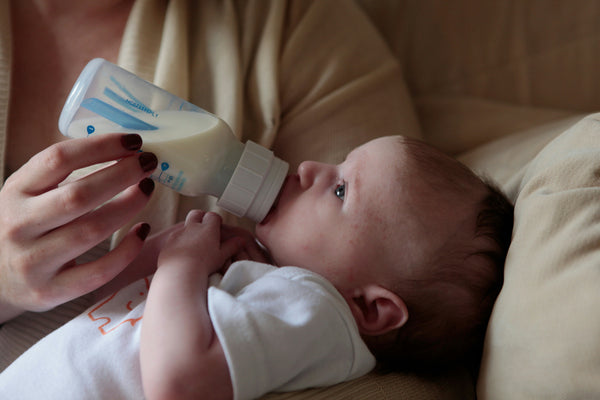Can You Combine Probiotics and Stool Softeners for Kids?
share this article

If your kiddo is backed up, uncomfortable, or struggling to poop regularly, your pediatrician might recommend a stool softener like polyethylene glycol (PEG 3350, often sold as Miralax). At the same time, you may be thinking about introducing probiotics to help address the root cause of constipation.
So, can you use probiotics and stool softeners together for kids?
Yes, and in some cases, this combination can be very helpful. But there are important considerations to keep in mind when combining the two. Here's what every parent should know.
What Do Stool Softeners Do?
Stool softeners like PEG 3350 work by drawing water into the colon, which softens stool and makes it easier to pass. They don’t stimulate the bowel or provide fiber - they’re more of a temporary mechanical fix. They can be effective for short-term use, but they don’t address underlying causes of constipation, like poor gut motility or dysbiosis (an imbalance in gut bacteria).
What Do Probiotics Do?
Probiotics—especially strains like Bifidobacterium infantis or B. lactis—support a healthy gut microbiome by helping:
-
Improve gut motility
-
Reduce gas and bloating
-
Promote regular, soft stools over time
-
Strengthen the gut lining and immune health
When paired with prebiotics (like HMOs or inulin), probiotics can have an even stronger effect by feeding the good bugs and improving overall gut function—especially helpful in constipated kiddos.
Growing Up Prebiotics provides a prebiotic blend of 2’-FL HMO and chicory root inulin, which has been shown to support stool softness and gut motility over 6+ weeks of consistent use.
Can You Use Them Together?
Yes. Probiotics and stool softeners can safely be used together in most cases and they actually serve complementary roles:
|
Stool Softeners |
Probiotics & Prebiotics |
|
Work quickly |
Work gradually (4–6 weeks) |
|
Add water to soften stool |
Support microbiome + motility |
|
Short-term symptom relief |
Long-term gut health support |
If your pediatrician recommends a stool softener for immediate relief, adding a daily probiotic/prebiotic can help transition your kiddo off stool softeners over time by restoring gut function naturally.
What to Watch For
-
Always check with your pediatrician, especially for toddlers under 2 or if your child has chronic GI issues.
-
Start probiotics/prebiotics slowly, especially if your kid is new to fiber. Some mild gas or bloating is normal at first.
-
Stay consistent. Probiotics and prebiotics often take up to 6 weeks to show full benefits [1].
Summary
Yes, you can combine stool softeners and probiotics for kids. Just know they serve different purposes. Stool softeners offer quick relief, while probiotics and prebiotics like those in Growing Up Prebiotics help address the long-term root causes of constipation by nurturing the gut. With the right plan, you can support both comfort today and better gut health tomorrow.
















